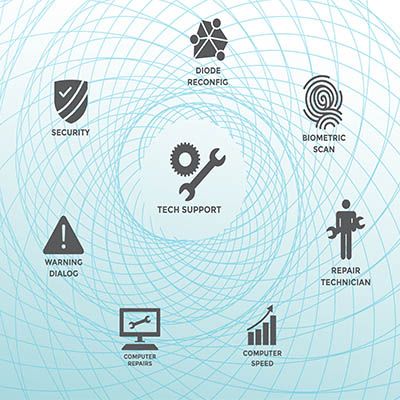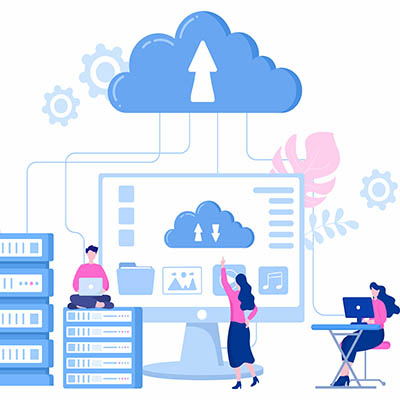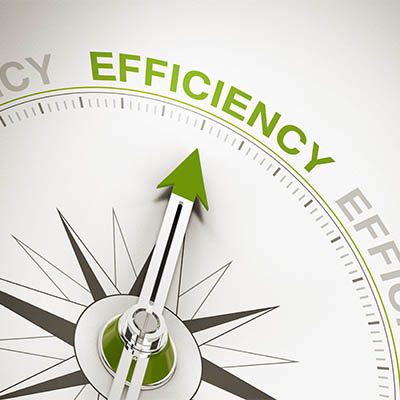Technology. It’s the engine of modern business, promising efficiency and connectivity. In business, we’re constantly bombarded with stories (real or not) of competitors that have scaled overnight with a single app. While this potential is real, it often fosters an environment where unrealistic expectations about technology take root. This “tech dreamworld” can be more damaging to your business than a faulty server.
Here’s why having realistic expectations of your business’ technology is not just wise, but important. This month, we’ll go through some unrealistic thoughts we see and how reality is different from the expectations people have.
Technology is a Tool, Not a Miracle Worker
The most fundamental truth about business technology is that it solves defined problems; it does not solve bad business strategy. One of the most prescient expectations business owners have is that when they purchase the newest software, it will double their revenue and fix all of their internal operational problems. The reality is that no matter the software: AI, CRM, ERP, and all other systems are force multipliers. If your sales process is fundamentally flawed, a new CRM will only make it easier to track the failures. If your company culture is toxic, collaboration software will just make the negativity more visible.
A more reasonable expectation is to identify the specific, measurable business processes you need to improve on and find the technology that allows you to do just that. Software that improves automation of certain elements of your business brings with it specific benefits, while applications that expand your business’ ability to be efficient and productive can do quite a bit to improve your business, but no matter how feature-rich a software is, it’s likely not going to completely fix your business.
Implementation Takes Time
The demo that a would-be vendor rolls out there rarely shows the six months of tedious data migration, the inevitable integration problems, or the hours of employee training required to make a new system functional. Many business owners think that they’ll be up and running with a completely new system within days; this is hardly ever the reality. The fact is that any significant change to your business’ technology is typically more work than you would like to admit.
The baseline is that you will deal with plenty of problems. Think about how big the move is… Just like Rome wasn’t built in a day, it’s going to take some time to get your new tools deployed, your employees trained on them, and other factors. Rushing it won’t help either, it will just bring more inefficiency.
The best thing you can do is build a buffer into your timeline. Double the vendor’s estimated implementation time and budget for internal resources (time and personnel) to manage the transition. Additionally, you will want to manage any stakeholder expectations by being transparent about how things are going, not to give them false promises.
The Cost is More Than the License Fee
Many business owners get sticker shock when they realize the true total cost of ownership (TCO) for a new piece of technology. This can actually be pretty jarring when rolling out a cloud app for your team. Sure, the cloud allows smaller businesses to get the applications and computing resources they need by offering them as a service, but unfortunately, the app is just a part of the TCO.
The TCO includes the subscription fee, the initial setup/customization costs, the ongoing IT support and maintenance, the mandatory integration with other systems, and the inevitable future upgrades. You may also need to add in any costs that require you to hire or train staff specifically to manage the new system.
To avoid problems, always factor in maintenance, training, customization, and future upgrade fees into your budget. Treat technology investment like a long-term capital expense, not a quick purchase.
No Single Technology is Set It and Forget It
If you’ve been in business for any length of time, you know that technology ages faster than milk left out on the counter. A system you implement today will require updates, patches, and possibly a complete replacement within a few years. You would be smart not to think that once your network is set up that you’re done.
Unfortunately, cyberthreats evolve daily, software vendors push out mandatory security updates, and operating systems become obsolete quicker than your hardware depreciates. You have to actively maintain your technology, or it becomes a massive liability.
To best do this, you should allocate a dedicated, continuous budget for maintenance, security, and incremental upgrades. Recognize that IT is an ongoing utility cost, not a one-time project. This proactive approach prevents the much larger, more expensive emergency fixes down the line. Our technology professionals can make this simpler than ever by handling around-the-clock monitoring, proactive management, and comprehensive backup.
A healthy, successful business approaches technology with clear eyes. They understand that technology is powerful, but it’s bound by the laws of physics, budgets, and human nature.
By grounding your technology strategy in reality, you will make better purchasing decisions, avoid costly overhauls, and ensure that your technology serves your business, rather than the other way around.
If you would like to have a conversation about your business’ technology and how to get the technology you need to properly run your business, and keep that technology running effectively, give our experts a call today at 978-798-6805.







